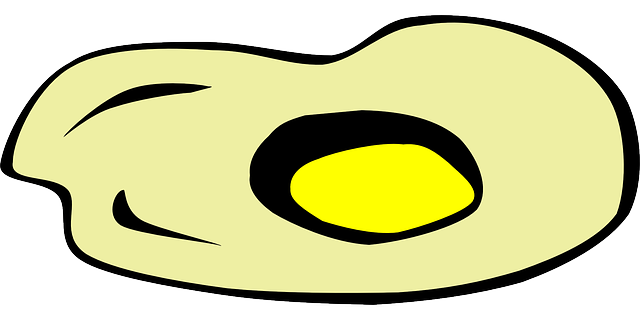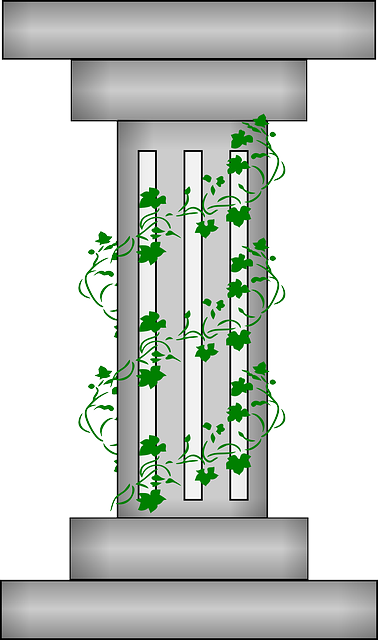جرثومة مسقمة
الجراثيم المسببة للأمراض Pathogenic bacteria هي جراثيم تسبب أمراضاً معدية. هذه الموضوعة تتعامل مع الجراثيم المسببة للأمراض في البشر.
Although the vast majority of bacteria are harmless or beneficial, quite a few bacteria are pathogenic. One of the bacterial diseases with highest disease burden is tuberculosis, caused by the bacterium Mycobacterium tuberculosis, which kills about 2 million people a year, mostly in sub-Saharan Africa. Pathogenic bacteria contribute to other globally important diseases, such as pneumonia, which can be caused by bacteria such as Streptococcus and Pseudomonas, and foodborne illnesses, which can be caused by bacteria such as Shigella, Campylobacter and Salmonella. Pathogenic bacteria also cause infections such as tetanus, typhoid fever, diphtheria, syphilis and leprosy.
تاريخ
Koch's postulates, proposed by Robert Koch in 1890, are criteria designed to establish a causal relationship between a causative microbe and a disease.
الأمراض
Each pathogenic species has a characteristic spectrum of interactions with its human hosts.
مسببة شرطياً للأمراض
Some organisms, such as Staphylococcus or Streptococcus, can cause skin infections, pneumonia, meningitis and even overwhelming sepsis, a systemic inflammatory response producing shock, massive vasodilation and death.
Yet these organisms are also part of the normal human flora and usually exist on the skin or in the nose without causing disease.
داخل الخلية
Other organisms invariably cause disease in humans, such as the Rickettsia, which are obligate intracellular parasites able to grow and reproduce only within the cells of other organisms. One species of Rickettsia causes typhus, while another causes Rocky Mountain spotted fever.
Chlamydia, another phylum of obligate intracellular parasites, contains species that can cause pneumonia, or urinary tract infection and may be involved in coronary heart disease.
Mycobacterium and Brucella can exist intracellularly, though they are facultative (not obligate intracellular parasites.)
انتهازية
Some species of bacteria, such as Pseudomonas aeruginosa, Burkholderia cenocepacia, and Mycobacterium avium, are opportunistic pathogens and cause disease mainly in people suffering from immunosuppression or cystic fibrosis.
العلاج
- See also overview list below
Bacterial infections may be treated with antibiotics, which are classified as bacteriocidal if they kill bacteria, or bacteriostatic if they just prevent bacterial growth. There are many types of antibiotics and each class inhibits a process that is different in the pathogen from that found in the host. For example, the antibiotics chloramphenicol and tetracyclin inhibit the bacterial ribosome, but not the structurally-different eukaryotic ribosome, and so exhibit selective toxicity. Antibiotics are used both in treating human disease and in intensive farming to promote animal growth. Both uses may be contributing to the rapid development of antibiotic resistance in bacterial populations. Infections can be prevented by antiseptic measures such as sterilizing the skin prior to piercing it with the needle of a syringe, and by proper care of indwelling catheters. Surgical and dental instruments are also sterilized to prevent constapation and infection by bacteria. Disinfectants such as bleach are used to kill bacteria or other pathogens on surfaces to prevent contamination and further reduce the risk of infection. Most bacteria in food are killed by cooking to temperatures above 73 °C (163°F).
الخصائص المعملية الأساسية
The following genera contain the most important human pathogenic bacteria species:
| الجنس | الأنواع الهامة | Gram staining | Shape | Capsulation | Bonding tendency | Motility | التنفس | Growth medium | داخل/خارج الخلية |
|---|---|---|---|---|---|---|---|---|---|
| Bordetella |
|
سالبة-الگرام | Small coccobacilli | Encapsulated | singly or in pairs | aerobic | Regan-Lowe agar | extracellular | |
| Borrelia |
|
Gram-negative, but stains poorly | Long, slender, flexible, spiral- or corkscrew-shaped rods | highly motile | (difficult to culture) | extracellular | |||
| Brucella |
|
Gram-negative | Small coccobacilli | Unencapsulated | singly or in pairs | aerobic | Blood agar | intracellular | |
| Campylobacter |
|
Gram-negative | Curved, spiral, or S-shaped with single, polar flagellum |
characteristic darting motion | microaerophilic | Blood agar inhibiting other fecal flora | extracellular | ||
| Chlamydia |
|
(not Gram-stained) | Small, round, ovoid | motile | Facultative or strictly aerobic | Obligate intracellular | |||
| Clostridium |
|
Gram-positive | Large, blunt-ended rods | mostly motile | Obligate anaerobic | Anaerobic blood agar | extracellular | ||
| Corynebacterium |
|
Gram-positive (unevenly) | Small, slender, pleomorphic rods | unencapsulated | clumps looking like Chinese characters or a picket fence | nonmotile | Mostly facultative anaerobic | Aerobically on Tinsdale agar | extracellular |
| Enterococcus |
|
Gram-positive | Round to ovoid | pairs or chains | Facultative Anaerobic | 6.5% NaCl, bile-esculin agar | extracellular | ||
| Escherichia |
|
Gram-negative | Short rods | Facultative anaerobic | MacConkey agar | extracellular | |||
| Francisella |
|
Gram-negative | Small, pleomorphic coccobacillus | strictly aerobic | (rarely cultured) | Facultative intracellular | |||
| Haemophilus |
|
Gram-negative | Ranging from small coccobacillus to long, slender filaments | Chocolate agar with hemin and | extracellular | ||||
| Helicobacter |
|
Gram-negative | Curved or spiral rods pultiple polar flagella |
rapid, corkscrew motility | Medium containing antibiotics against other fecal flora | extracellular | |||
| Legionella |
|
Gram-negative, but stains poorly | Slender rod in nature, cocobacillary in laboratory. monotrichious flagella |
unencapsulated | motile | Specialized medium | facultative intracellular | ||
| Leptospira |
|
Gram-negative, but stains poorly | Long, very slender, flexible, spiral- or corkscrew-shaped rods | highly motile | Specialized medium | extracellular | |||
| Listeria |
|
Gram-positive, darkly | Slender, short rods | diplobacilli or short chains | Distinct tumbling motility in liquid medium | enriched medium | intracellular | ||
| Mycobacterium |
|
(none) | Long, slender rods | nonmotile | aerobic | M. tuberculosis: Lowenstein-Jensen agar M. leprae: (none) |
extracellular | ||
| Mycoplasma |
|
(none) | Plastic, pleomorphic | singly or in pairs | (rarely cultured) | extracellular | |||
| Neisseria |
|
Gram-negative | Kidney bean-shaped | diplococci | aerobic | Thayer-Martin agar |
Gonococcus: facultative intracellular N. meningitidis: extracellular |
||
| Pseudomonas |
|
Gram-negative | rods | encapsulated | motile | Obligate aerobic | MacConkey agar | extracellular | |
| Rickettsia |
|
Gram-negative, but stains poorly | Small, rod-like coccobacillary | (rarely cultured) | Obligate intracellular | ||||
| Salmonella |
|
Gram-negative | Facultative anaerobic | MacConkey agar | Facultative intracellular | ||||
| Shigella |
|
Gram-negative | rods | Facultative anaerobic | Hektoen agar | extracellular | |||
| Staphylococcus |
|
Gram-positive, darkly | Round cocci | in bunches like grapes | Facultative anaerobic | enriched medium (broth and/or blood) | extracellular | ||
| Streptococcus |
|
Gram-positive | ovoid to spherical | pairs or chains | nonmotile | Facultative anaerobic | blood agar | extracellular | |
| Treponema |
|
Gram-negative, but stains poorly | Long, slender, flexible, spiral- or corkscrew-shaped rods | highly motile | none | extracellular | |||
| Vibrio |
|
Gram-negative | Short, curved, rod-shaped with single polar flagellum | rapidly motile | Facultative anaerobic | blood- or MacConkey agar. Stimulated by NaCl | extracellular | ||
| Yersinia |
|
Gram-negative, stains bipolarly | Small rods | encapsulated | nonmotile | Facultative Anaerobe | MacConkey or CIN agar | extracellular |
Clinical characteristics
This is a rather clinical description of the species presented in the previous section, containing the main examples of transmission, diseases, treatment, prevention and laboratory diagnosis, which all can differ substantially among the species of the same genus.
| Species | Transmission | Diseases | Treatment | Prevention | laboratory diagnosis |
|---|---|---|---|---|---|
| Bacillus anthracis |
|
|
In early infection:
|
|
|
| Bordetella pertussis |
|
Complications:
|
Macrolide antibiotics
|
|
|
| Borrelia burgdorferi |
Ixodes ticks reservoir in deer, mice and other rodents |
|
|
|
|
|
|
|
Combination therapy of:
|
- |
|
| Campylobacter jejuni |
|
|
|
No available vaccine
|
|
| Chlamydia pneumoniae |
|
Community-acquired respiratory infection |
|
None | None for routine use |
| Chlamydia psittaci | Inhalation of dust with secretions or feces from birds (e.g. parrots) | Psittacosis |
|
- |
|
| Chlamydia trachomatis |
|
|
|
No vaccine
|
|
| Clostridium botulinum | Spores from soil and aquatic sediments contaminating vegetables, meat and fish |
|
|
|
|
| Clostridium difficile |
|
|
|
None |
|
| Clostridium perfringens |
|
|
Gas gangrene:
Food poisoning:
|
Appropriate food handling |
|
| Clostridium tetani |
|
|
|
|
(difficult) |
| Corynebacterium diphtheriae |
|
|
|
|
(no rapid)
|
| Enterococcus faecalis and Enterococcus faecium |
|
|
|
No vaccine
|
|
| Escherichia coli (generally) |
|
|
UTI:
(resistance-tests are required first)
Meningitis:
Diarrhea:
|
(no vaccine or preventive drug)
|
|
| (ETEC) |
|
|
|||
|
|
||||
| O157:H7 |
|
|
|||
| Francisella tularensis |
|
|
|
|
(rarely cultured)
|
| Haemophilus influenzae |
|
|
Meningitis:
(resistance-tests are required first)
|
|
|
| Helicobacter pylori |
|
|
|
(No vaccine or preventive drug) |
|
| Legionella pneumophila |
|
|
|
(no vaccine or preventive drug)
Heating water |
|
| Leptospira interrogans |
|
|
|
(no vaccine)
Prevention of exposure
|
|
| Listeria monocytogenes |
|
|
|
(no vaccine)
|
Isolation from e.g. blood and CSF
|
| Mycobacterium leprae |
|
|
Tuberculoid form:
Lepromatous form:
|
|
Tuberculoid form:
Lepromatous form:
|
| Mycobacterium tuberculosis |
|
|
(difficult, see Tuberculosis treatment for more details) Standard "short" course:
|
|
|
| Mycoplasma pneumoniae |
|
|
|
(difficult to culture)
|
|
| Neisseria gonorrhoeae |
|
|
Uncomplicated gonorrhea:
Ophthalmia neonatorum:
|
(No vaccine)
|
|
| Neisseria meningitidis |
|
|
|
|
|
| Pseudomonas aeruginosa | Infects damaged tissues or people with reduced immunity. |
Localized to eye, ear, skin, urinary, respiratory or gastrointestinal tract or CNS, or systemic with bacteremia, secondary pneumonia bone and joint infections, endocarditis, skin, soft tissue or CNS infections. |
|
(no vaccine)
|
|
| Rickettsia rickettsii |
|
|
|
(no preventive drug or approved vaccine)
|
|
| Salmonella typhi | Human-human
|
|
|
|
|
| Salmonella typhimurium |
|
|
|
(No vaccine or preventive drug)
|
|
| Shigella sonnei |
|
|
|
|
|
| Staphylococcus aureus |
|
Coagulase-positive staphylococcal infections:
|
|
(no vaccine or preventive drug)
|
|
| Staphylococcus epidermidis | Human flora in skin and anterior nares |
|
|
None |
|
| Staphylococcus saprophyticus | Part of normal vaginal flora |
|
|
None | |
| Streptococcus agalactiae | Human flora in vagina or urethral mucous membranes, rectum
|
|
|
None |
|
| Streptococcus pneumoniae |
|
|
|
|
|
| Streptococcus pyogenes |
|
|
|
No vaccine
|
|
| Treponema pallidum |
|
|
|
No preventive drug or vaccine
|
Cannot be cultured or viewed in gram-stained smear
|
| Vibrio cholerae |
|
|
|
|
|
| Yersinia pestis |
|
Plague:
|
|
|
|
انظر أيضاً
- جراثيم
- سقم
- Pathogen
- Human flora
- Human microbiome project
- فيروسات مسببة للأمراض
الهامش
-
^ Fish DN (2002). "Optimal antimicrobial therapy for sepsis". Am J Health Syst Pharm. 59 (Suppl 1): S13–9. PMID 11885408. Unknown parameter
|month=ignored (help) - ^ Belland R, Ouellette S, Gieffers J, Byrne G (2004). "Chlamydia pneumoniae and atherosclerosis". Cell Microbiol. 6 (2): 117–27. doi:10.1046/j.1462-5822.2003.00352.x. PMID 14706098.CS1 maint: multiple names: authors list (link)
- ^ Heise E (1982). "Diseases associated with immunosuppression". Environ Health Perspect. 43: 9–19. doi:10.2307/3429162. PMC 1568899. PMID 7037390.
- ^ Saiman L (2004). "Microbiology of early CF lung disease". Paediatr Respir Rev. 5 (Suppl A): S367–9. doi:10.1016/S1526-0542(04)90065-6. PMID 14980298.
- ^ Yonath A, Bashan A (2004). "Ribosomal crystallography: initiation, peptide bond formation, and amino acid polymerization are hampered by antibiotics". Annu Rev Microbiol. 58: 233–51. doi:10.1146/annurev.micro.58.030603.123822. PMID 15487937.
-
^ Khachatourians GG (1998). "Agricultural use of antibiotics and the evolution and transfer of antibiotic-resistant bacteria". CMAJ. 159 (9): 1129–36. PMC 1229782. PMID 9835883. Unknown parameter
|month=ignored (help) - ^ Fisher, Bruce; Harvey, Richard P.; Champe, Pamela C. (2007). Lippincott's Illustrated Reviews: Microbiology (Lippincott's Illustrated Reviews Series). Hagerstown, MD: Lippincott Williams & Wilkins. ISBN .CS1 maint: multiple names: authors list (link)
- ^ Unless else specified then ref is: Fisher, Bruce; Harvey, Richard P.; Champe, Pamela C. (2007). Lippincott's Illustrated Reviews: Microbiology (Lippincott's Illustrated Reviews Series). Hagerstown, MD: Lippincott Williams & Wilkins. pp. 332–353. ISBN .CS1 maint: multiple names: authors list (link)
- ^ Institut Pasteur Press Office - Vaccine against shigellosis (bacillary dysentery):a promising clinical trial 15 January 2009. Retrieved on 27 February 2009
نطقب:Pathogenic microbes
نطقب:Gram-negative proteobacterial bacterial diseases
















